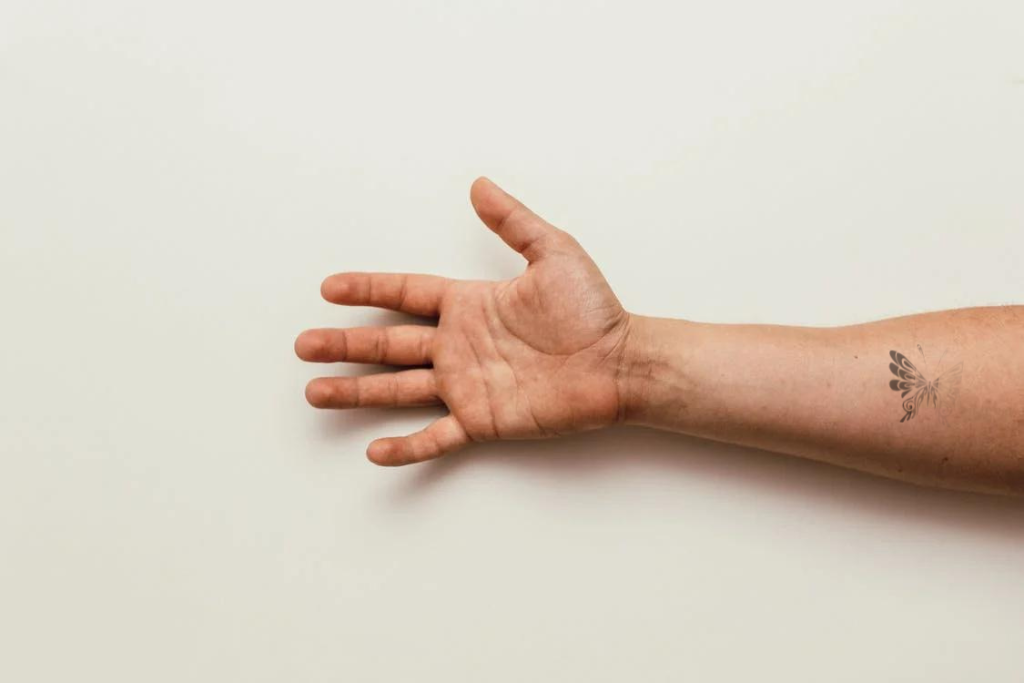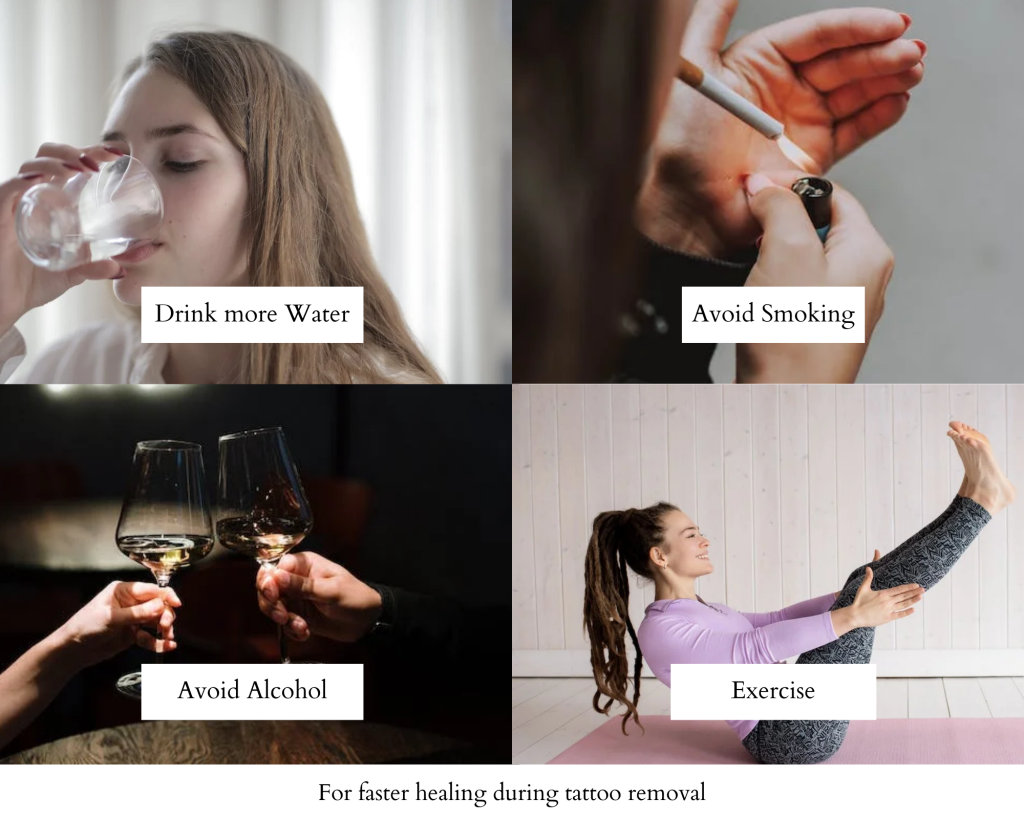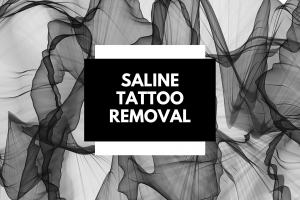
Getting a tattoo removed can be considered as a liberating process. With changed or upgraded aesthetic sense or corporate demands, people often get their tattoos removed. Laser tattoo removal has been widely considered to be the better and more popular way to get a tattoo removed. However, the tattoo removal process does not end with just the laser session. After each session, skin care is a vital part of the tattoo removal procedure, as proper aftercare may speed up the process, and reduce the chances of different risks and side effects.
How Long Does It Take For Tattoo Removal To Heal
Laser tattoo removal is a long process – it takes many sessions to get a tattoo removed completely. This will depend on a number of factors such as size, age, location, colors, and ink density of the tattoo.
Healing time after each session also varies. It depends on factors like the individual’s immunity system, health, and aftercare routine.
In fact, some people experience skin fatigue, where the skin takes longer than 6 weeks to heal completely. It can happen by not giving the skin proper time to heal in between sessions, or because of using improper laser settings, or apparatus.
The post treatment efforts are very important after the tattoo removal procedure. It almost completes the tattoo removal process. Staying hydrated and maintaining a healthy diet along with other external skin care methods, makes the healing process more effective and speedy.
Immediate Side Effects After Tattoo Removal
Redness, frosting, itchiness, blistering and swelling are very common side effects, and are expected to be seen after treatment. The skin area might feel tender and sensitive. These side effects are expected to subside within a week or two after the session.
Immediate Skincare After Laser Treatment
Tattoos can be removed from different parts of the body and for the first three to four days applying a layer of antibiotic healing ointment and keeping it bandaged with sterilized gauze helps in the process.
The bandage can be removed after three days, but keeping the area clean and dry is a must. Also, applying moisturizing creams helps in healing.
Vitamin E helps in restoring damaged skin cells and applying sunscreen (SPF 25+) helps from sun exposure, which can harm the skin immensely after laser treatment.
Bathing After A Laser Tattoo Removal Session
Once the bandage has been removed, washing the treated area is fine. Avoiding high-pressure water, pool water, and hot tubs is always a good idea as it increases the chance of infection. Very mild and chemical-free soap can be used for keeping the area clean.
Tattoo Removal Aftercare
Without proper aftercare, the tattoo removal procedure is incomplete. The following list will help with the aftercare routine:
- The skin after the laser treatment is likely to experience frosting in the treated area. The heat from the laser can cause plasma or gas to form and carbon dioxide might be released from the skin. This causes frosting – swelling and some redness. Cold compress, Ibuprofen, or Tylenol can be used to reduce this symptom.
- The dressing that will be applied just after the laser treatment must stay put at least for eight to twelve hours. And after the dressing is removed, cleaning the wounded area twice a day with mild, chemical-free soap shall keep the area infection free.
- In the initial healing phase, applying sunscreen, higher than SPF 25, is effective for protection from the sun, which causes skin burns.
- Healing serums recommended by professionals can be applied on the treated area of the skin.
- Other than the healing solutions recommended by the professionals, no other lotions, creams, or makeup should be applied on/to the treated area.
- Excessive sweating during the first two to seven days can disrupt the healing process.
- Monitor skin regularly to note progress.
What Helps In Faster Healing Of The Treated Skin?

A strong immune system helps in faster skin repair and works against threats of infection after the tattoo removal procedure.
- Drinking Water: Keeping the body hydrated helps in building a stronger immunity, which in turn helps in skin repair, by flushing out toxins and restoring red blood cells.
- Exercise: Exercise increases blood flow, which helps in repairing the skin faster. However, extensive sweating might harm the affected area.
- Avoiding Alcohol: Extreme intake of alcohol causes dehydration, hindering the healing process.
- Avoid Smoking: When a person smokes, the immune system gets busy working on removing pollutants rather than focusing on the healing process, making it slower than usual.
Things To Avoid After Tattoo Removal
Avoiding the following things can help in faster and more effective result –
- Avoid picking scabs or blisters. Scabs and blisters are common side effects of the healing process of tattoo removal. These are temporary inflated wounds on the skin, which shouldn’t be picked. Picking on these wounds can cause skin infection. The best way of getting rid of these wounds is to allow them to heal on their own.
- Avoid sun overexposure. The treated area after the tattoo removal procedure needs to be kept away from sunlight. Exposure to sunlight often leads to skin burn which ends up delaying the treatment sessions.
- Swimming pools, hot tubs, saunas, and high pressure water must also be avoided.
- Avoid shaving or waxing the treated area.
The healing process is based on the skin condition, complexion, and immunity of the person, and how well the aftercare routine is followed by the individual. For some people skin recovery is faster, and for some the process is slow. However, following after care tips by experts or laser technicians helps in faster and more effective skin healing.




